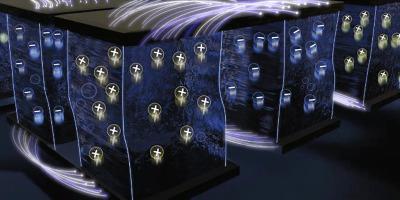Journal of Energy Chemistry ( IF 14.0 ) Pub Date : 2021-03-11 , DOI: 10.1016/j.jechem.2021.02.022 Dan Zhao , Alois Würger , Xavier Crispin

|
The tremendous amount of wasted heat from solar radiation and industry dissipation has motivated the development of thermoelectric concepts that directly convert heat into electricity. The main challenge in practical applications for thermoelectrics is the high cost from both materials and manufacturing. Recently, breakthrough progresses in ionic thermoelectrics open up new possibilities to charge energy storage devices when submitted to a temperature gradient. The charging voltage is internally from the ionic Seebeck effect of the electrolyte between two electrodes. Hence electrolytes with high thermoelectric figure of merit are classified as ionic thermoelectric materials. Most ionic thermoelectric materials are composed of abundant elements, and they can generate hundreds of times larger thermal voltage than that of electronic materials. This emerging thermoelectric category brings new hope to fabricate low cost and large area heat-to-energy conversion devices, and triggers a renewed interest for ionic thermodiffusion. In this review, we summarize the state of the art in the new field of ionic thermoelectrics, from the driving force of the ionic thermodiffusion to material and application developments. We present a general map of ionic thermoelectric materials, discuss the unique characters of each type of the reported electrolytes, and propose potential optimization and future topics of ionic thermoelectrics.
中文翻译:

离子热电材料和装置
太阳辐射和工业耗散产生的大量浪费的热量推动了直接将热量转化为电能的热电概念的发展。在热电实际应用中的主要挑战是材料和制造的高成本。近年来,离子热电技术的突破性进展为在温度梯度条件下为储能装置充电提供了新的可能性。充电电压内部来自两个电极之间的电解质的离子塞贝克效应。因此,具有高热电品质因数的电解质被归类为离子热电材料。大多数离子型热电材料由丰富的元素组成,它们产生的热电压是电子材料的数百倍。这一新兴的热电类别为制造低成本和大面积热能转换装置带来了新希望,并引发了人们对离子热扩散的新兴趣。在这篇综述中,我们总结了离子热电新领域中的最新技术,从离子热扩散的驱动力到材料和应用的发展。我们提供了离子热电材料的总体图,讨论了每种类型的已报道电解质的独特特征,并提出了离子热电学的潜在优化和未来主题。从离子热扩散的驱动力到材料和应用开发。我们提供了离子热电材料的总体图,讨论了每种类型的已报道电解质的独特特征,并提出了离子热电学的潜在优化和未来主题。从离子热扩散的驱动力到材料和应用开发。我们提供了离子热电材料的总体图,讨论了每种类型的已报道电解质的独特特征,并提出了离子热电学的潜在优化和未来主题。

































 京公网安备 11010802027423号
京公网安备 11010802027423号